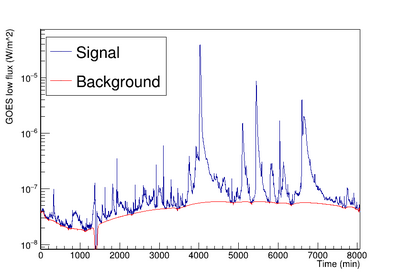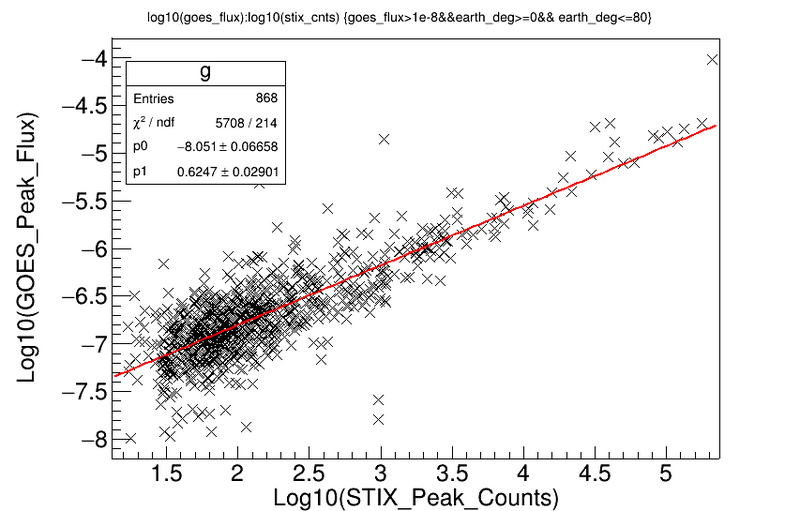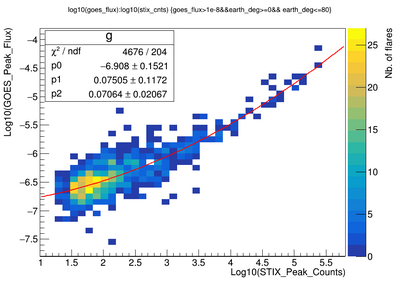Difference between revisions of "GOES Flux vs STIX counts"
| Line 1: | Line 1: | ||
| − | [[File: | + | [[File:Goes stix scatter polynomial 1oder v2.png|800px|thumb|none| Scatter plot of STIX counts (4 - 10 keV) versus GOES flux and as well as a linear fit and a polynomial fit to the data. ]] |
The GOES flux of a solar flare is estimated using<br> | The GOES flux of a solar flare is estimated using<br> | ||
flux=10^(p0+p1*x), <br> | flux=10^(p0+p1*x), <br> | ||
Revision as of 08:19, 21 January 2022
The GOES flux of a solar flare is estimated using
flux=10^(p0+p1*x),
with x=log10(stix_peak_counts*r^2)
where p0, p1 are the parameters from the curve fit, peak_counts is the STIX QL LC peak
counts and r is the distance between the Sun and solar orbiter in units of au.

GOES flux background estimation using algorithm described <a href="https://root.cern.ch/doc/v608/classTSpectrum.html#a56e15d1c36c7557b17d5f6d68fa315a7">here</a>

